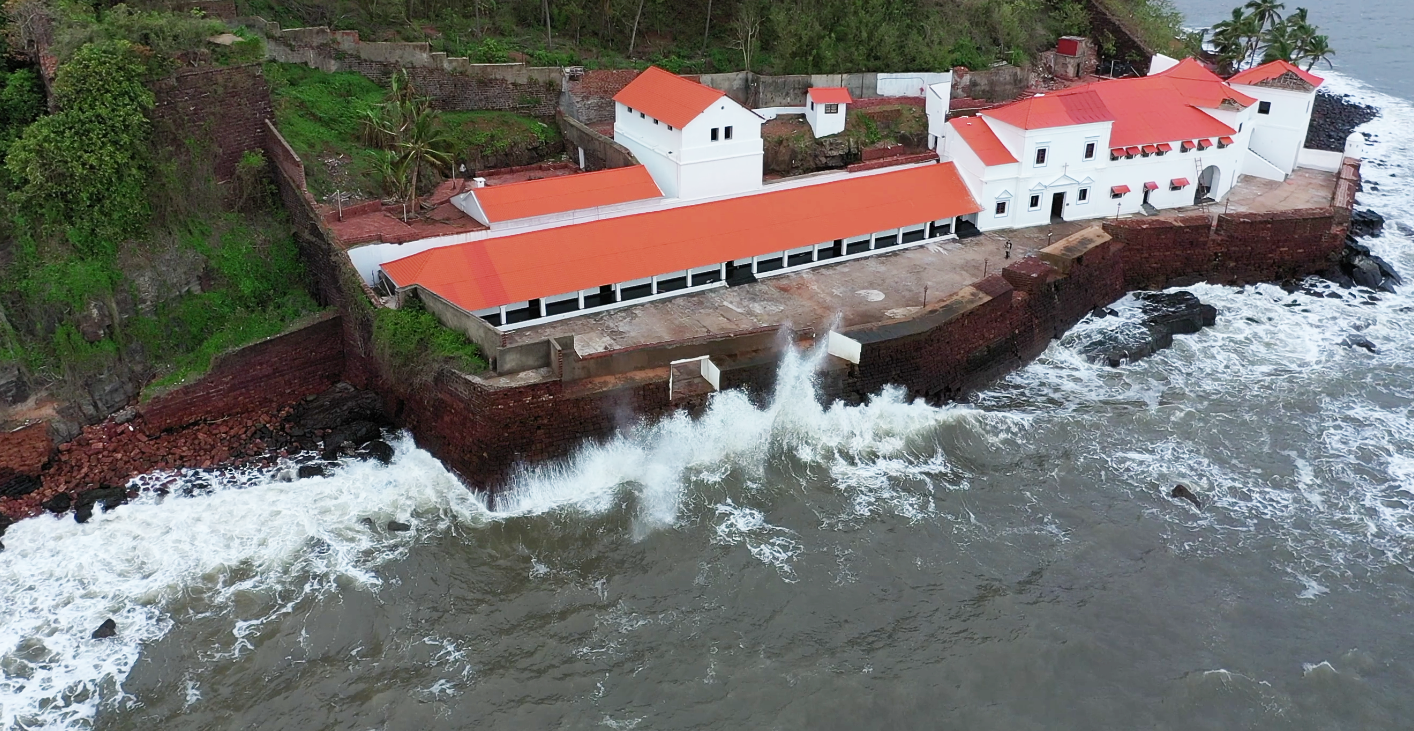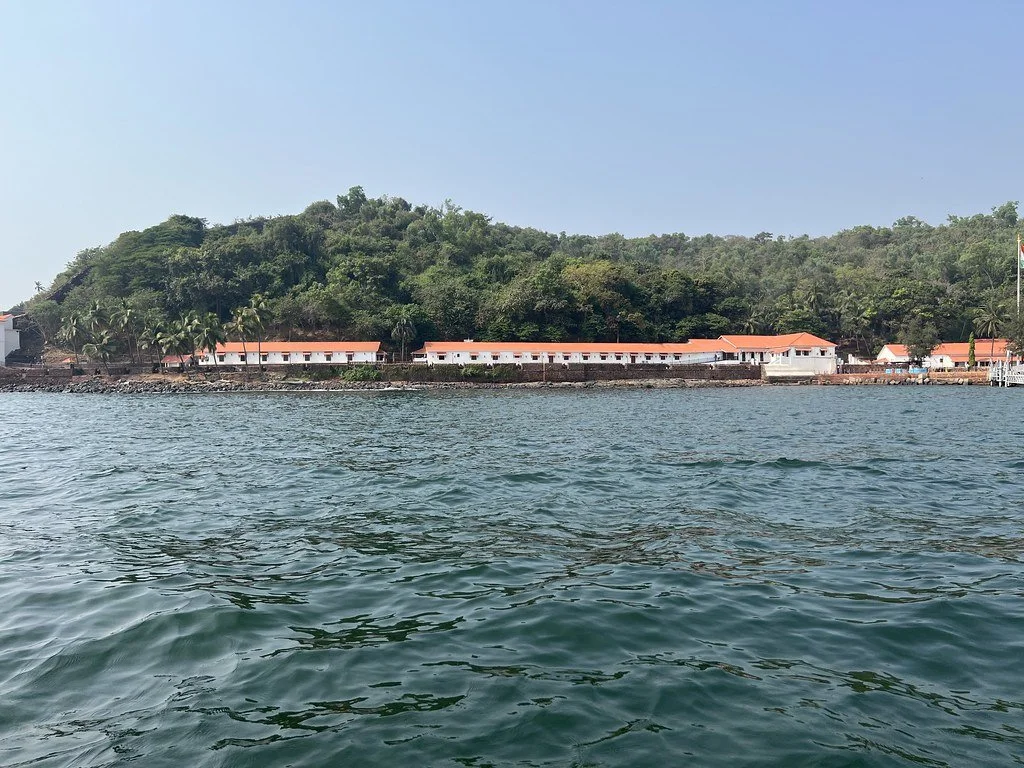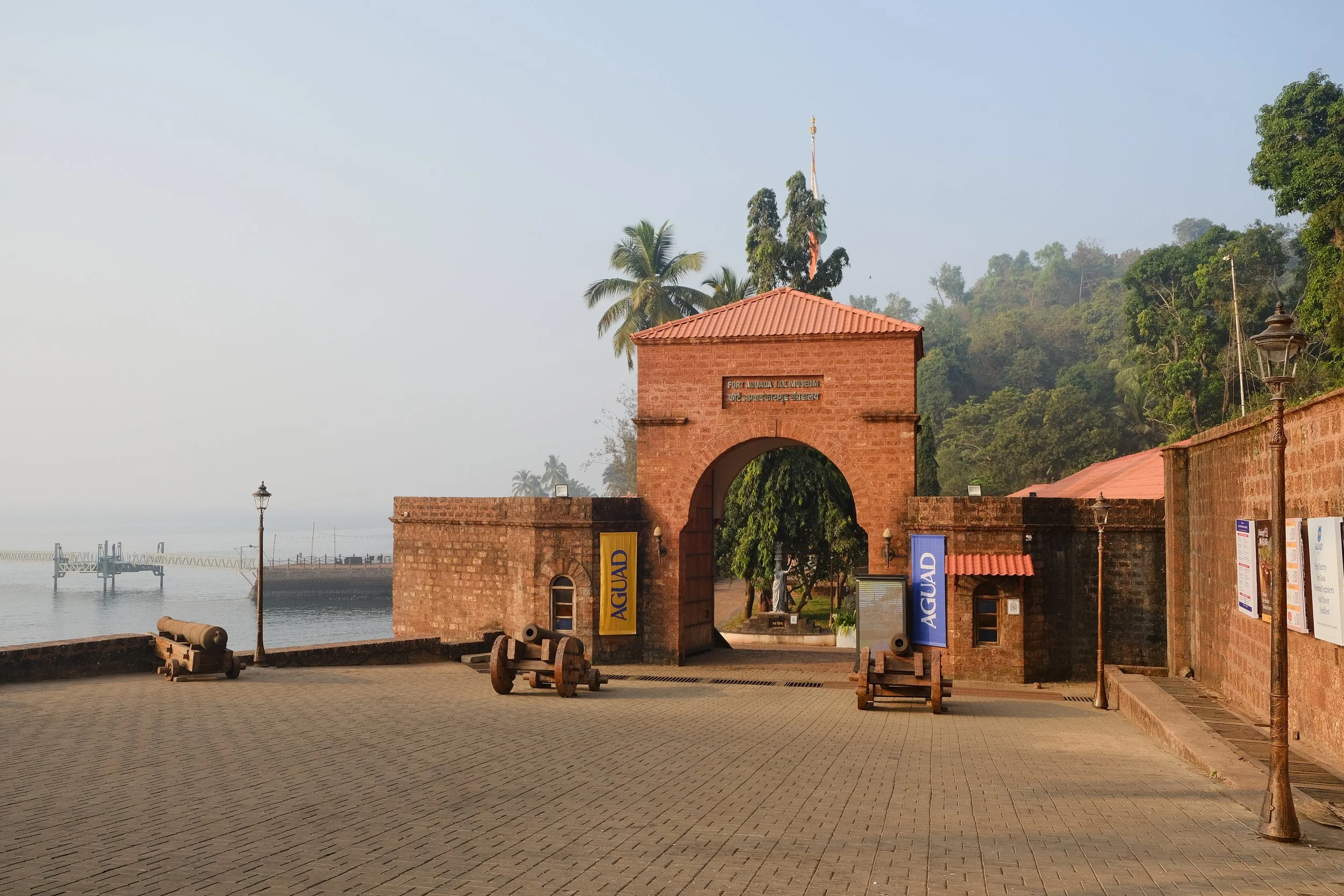
History of Aguad Port and Jail
Aguad Fort, known once as ‘La Fortaleza Real de Aguad’, is a 17th Century military fort built to defend Portuguese Goa from the Marathas, British and the Dutch.
Aguad comprises the Upper site containing Asia’s oldest lighthouse, a gunpowder room and rainwater harvesting reservoir, and the Lower site, which houses the Port and Jail.
You are visiting here the Aguad Port & Jail Complex, which now houses a centre for heritage and the arts, Aguad.
17th Century
Aguad Fort, Port and Jail built.
Portugal's Chief Engineer in Goa, Julião Simão who also made the Basilica of Bom Jesus and Se Cathedral was responsible for the fort's design and the fortification with an extensive circumference was completed between 1609 and 1612 during the tenure of Governor Ruy Lourenco De Tavora.
In the beginning, this citadel of Aguad was known as Praca Da Santa Catharina.
This site tells a rich story of Goa’s unique past. Its structures were first a port providing a safe berth for Portuguese ships. Built in the age of sea voyage and discovery, there is great significance to why this area was chosen and the place it held in protecting precious Goa; known then as ‘Little Lisbon’ and ‘Lisbon of the East’.
The opening of the sea route to India by Vasco Da Gama in 1497 changed the ma
p of the world.
There were three dockyards between the city of Goa and the riverbank; oak and pine was used for construction of ships but teak was the best timber ever known for shipbuilding activity in India. The ships that plied between India and Portugal usually had a capacity of 400 tons and later 600 tons. Some of these vessels carried heavy guns, artillery for warfare, cargo and horses.
Ships docked here for replenishment of freshwater and supplies and it held the largest freshwater storages in Asia with capacity to store 2,376,000 gallons of water.
From these freshwater reservoirs and ancient aquifers comes its name ‘Aguad’ {Agua“ water” Da “gives”} Aguad holds a spectacular story of human settlement around water, of sea voyages and rituals to mark seasonal shifts in the waters, as well as of preserving and conserving techniques for freshwater.
Mid-20th Century
Salazar converts to a prison
Portuguese autocrat António de Oliveira Salazar’s administration converted this site into a prison.
During Goa’s fight for freedom the freedom fighters were imprisoned here.
17th Dec 1961
Operation Vijay
In December 1961 ‘Operation Vijay’ commenced by Indian Armed forces with complete encirclement of all Portuguese land and sea military installations, camps and garrisons.
On the night of 18th December 1961, Major Shivdev Singh Sidhu and Captain Vijay Kumar Sehgal, lead a squadron of the 7th Cavalry Division reached this very site aiming to rescue the Goan freedom fighters imprisoned here. On 19th December 1961, Goa officially became part of India and was declared as a Union Territory along with Daman and Diu.
1961 - 2015
Aguada Central Jail, Goa
After 1961 Aguad became Goa’s central jail which it remained till 2015.
2015
Jail Decommissioned
The jail was decommissioned, and it was planned to repurpose it for tourism
2018-2021
Restoration
Goa Tourism Development Corporation undertook the restoration of the site under the Swadesh Darshan Scheme of the Central Government with the sole purpose of increasing the awareness among the general public and tourists about the rich history & heritage of Goa.
2022
AGUAD
AGUAD opens its doors to its past, with the interactive museum, revived reservoir heart, beautiful vistas, iconic jetty, and historic prison.
Inviting you into its present, as a modern centre for arts, culture, music, events, recreation and retail.








